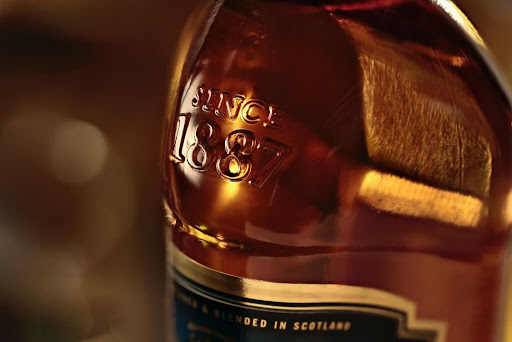From the smoky peat bogs of Scotland to the cornfields of Kentucky, whiskey has been ingrained into the cultural fabric of societies across the globe. As a connoisseur and distiller, I’ve been fortunate to journey through the rich history and vibrant traditions that define whiskey in both the US and Europe. Here, I invite you to join me as we traverse this spirited trail.
A Brief History of Whiskey in the US and Europe
Our journey begins in Ireland and Scotland, where the first recorded instances of distilling took place in the early 15th century. Monks without access to vineyards started fermenting grain mash, resulting in the birth of uisge beatha, or “water of life,” later anglicized to “whiskey.” Over time, this craft spread to America, where immigrants adapted the technique to local grains, giving birth to distinctly American whiskeys like Bourbon and Rye.
In the 20th century, both regions faced major setbacks – Prohibition in the US (1920-1933) and the two World Wars in Europe – leading to numerous distilleries closing their doors. However, whiskey-making saw a revival towards the end of the century, with the re-emergence of craft distilleries and a worldwide recognition of whiskey as a premium spirit.
The Role of Whiskey in Local Traditions and Celebrations
Whiskey is more than just a drink – it’s a symbol of celebration, unity, and local pride. In Ireland, a shot of whiskey is often raised in honor of St. Patrick, the nation’s patron saint. The Scottish celebrate Hogmanay, the last day of the year, with a “wee dram,” while the American South upholds the tradition of Bourbon at Kentucky Derby parties.
Expanding on the central role that whiskey plays in local traditions and celebrations, we find diverse practices from different regions. Here, I present five examples of this vital connection between culture and this spirit, enriching the tapestry that defines the world of whiskey.
1. Scottish Hogmanay
Let’s start at the heart of whiskey – Scotland. On the eve of the New Year, the Scots celebrate Hogmanay. It’s more than just a party; it’s a ritual, dating back to the Viking winter solstice celebrations. The ‘First-Footing’ tradition is central to this celebration. It dictates that the first person to enter a home after midnight should bring a gift – traditionally, a lump of coal for warmth and a dram of Scotch whisky to ensure good cheer for the year to come. The latter has persisted, and the sharing of Scotch whisky remains a sign of goodwill, hospitality, and friendship as people welcome the New Year.
2. Irish Wake
In Ireland, whiskey has a sacred place even in mourning rituals. An Irish Wake is a time for the community to gather, remember the departed, and offer support to the bereaved family. Central to this is a bottle (or several) of whiskey. It’s not only consumed in respect for the departed soul but also acts as a social lubricant, allowing people to share stories, celebrate life, and ease the pain of loss.
3. Kentucky Derby in the US
In the Southern United States, particularly Kentucky, the Kentucky Derby is not just a horse race; it’s a celebration of regional pride and tradition. The Mint Julep, a cocktail made with bourbon, mint, sugar, and water, has been the traditional beverage of the derby for nearly a century. Every year, almost 120,000 Mint Juleps are served at Churchill Downs over the two-day event. This tradition not only underlines bourbon’s importance in Southern culture but also showcases its versatility as a spirit.
4. Burns Night in Scotland
Back in Scotland, the end of January sees the celebration of Burns Night, commemorating the life of poet Robert Burns. Traditional festivities include the recitation of Burns’ poems, a supper of haggis (a traditional Scottish dish), and, importantly, several toasts made with Scotch whisky. This tradition mirrors the deep-seated connection between whiskey, cultural heritage, and the collective identity of the Scottish people.
5. The Japanese Whisky Ceremony
While whiskey was born in Europe, it has found a home in Japan, where it has been embraced and adapted into the local culture. Drawing on their ceremonial and ritualistic roots, the Japanese have developed a whiskey ceremony akin to the traditional tea ceremony. It involves precise measures, careful dilution, and a ritualistic presentation that emphasizes respect, peace, and cleanliness. While it may be a departure from the Western whiskey tradition, it emphasizes the spirit’s ability to transcend borders and adapt to different cultural norms.
These traditions underline how whiskey is intrinsically woven into the societal fabric, reinforcing community ties and marking rites of passage. As diverse as they are, they share a common thread – the unity and connection facilitated by sharing a glass of whiskey. From the highlands of Scotland to the heart of Kentucky, and even across to the Land of the Rising Sun, whiskey remains a beloved, unifying spirit of celebration.
Famous Whiskey Distilleries and Their Stories
Every distillery has a story, etched in each drop of spirit. In Scotland, the Lagavulin Distillery on Islay has been producing its peaty and powerful Scotch since 1816, weathering all adversities. In Ireland, Jameson’s Old Midleton Distillery is home to the largest pot still in the world, a testament to the brand’s legacy.
Across the Atlantic, the Jack Daniel’s Distillery in Lynchburg, Tennessee, embodies the American Dream. Despite a humble beginning, it has become one of the most recognized whiskey brands worldwide. Similarly, the Buffalo Trace Distillery in Kentucky proudly carries on the tradition of Bourbon making despite Prohibition and multiple floods.
Whiskey’s Influence on Popular Culture
Whiskey’s cultural influence extends beyond the distillery walls. It’s seeped into our music, with artists from Frank Sinatra to Amy Winehouse singing its praises. In cinema, it’s been a companion to characters from the suave James Bond favoring his whiskey neat, to The Dude in “The Big Lebowski” stirring up a White Russian.
Furthermore, a survey of literature would be incomplete without mentioning the role of whiskey. Hemingway’s characters often found solace in it, while J.D. Salinger’s Holden Caulfield appreciated a good Scotch and soda.
A Toast to Tradition
As we conclude this spirited journey through the cultural significance of whiskey in the US and Europe, it’s vital to acknowledge the potent nature of this beloved spirit. While whiskey may be steeped in tradition, shared in celebration, and savored in solitude, it’s also a beverage that demands respect.
Throughout history, whiskey has served as a unifying force, connecting people across different cultures and continents. It has been woven into the fabric of our societies, immortalized in song and cinema, and continues to inspire storytellers around the globe. Yet, like any powerful force, it must be handled with care.
The enjoyment of whiskey – and indeed, any spirit – should always be balanced with moderation and responsibility. Understanding this balance is just as crucial to appreciating whiskey as knowing the difference between Scotch and Bourbon, or how to conduct a tasting.
As you explore the world of whiskey, remember that each sip carries centuries of tradition, craftsmanship, and communal spirit. Honor these rich histories and vibrant cultures by enjoying your dram responsibly. And perhaps the next time you raise your glass, it might be with a whiskey you discovered from an online store like WhiskeyD, allowing you to experience the cultural significance of whiskey within your own traditions.
Finally, as we say in the whiskey world, here’s to ‘the water of life,’ may it continue to flow, inspire, and unite us for generations to come. But let it flow responsibly, so the traditions it fosters continue to be celebrations, not burdens.
Charting Projects & Whiskey Trails: While Stephanie Burger’s days are spent setting project benchmarks, her evenings are reserved for exploring and penning whiskey tales at Whiskeyd.com.

Welcome to our blog! My name is Yuvraj Kore, and I am a blogger who has been exploring the world of blogging since 2017. It all started back in 2014 when I attended a digital marketing program at college and learned about the intriguing world of blogging.
